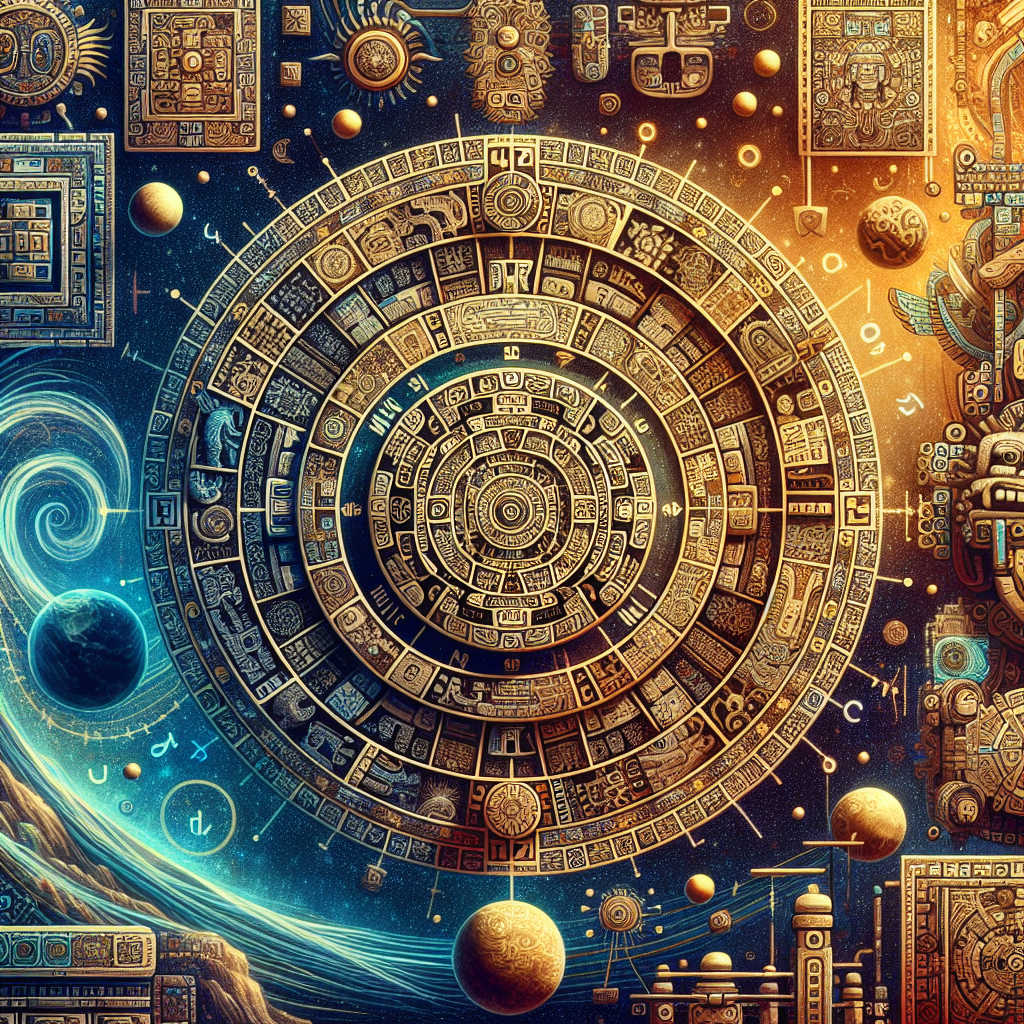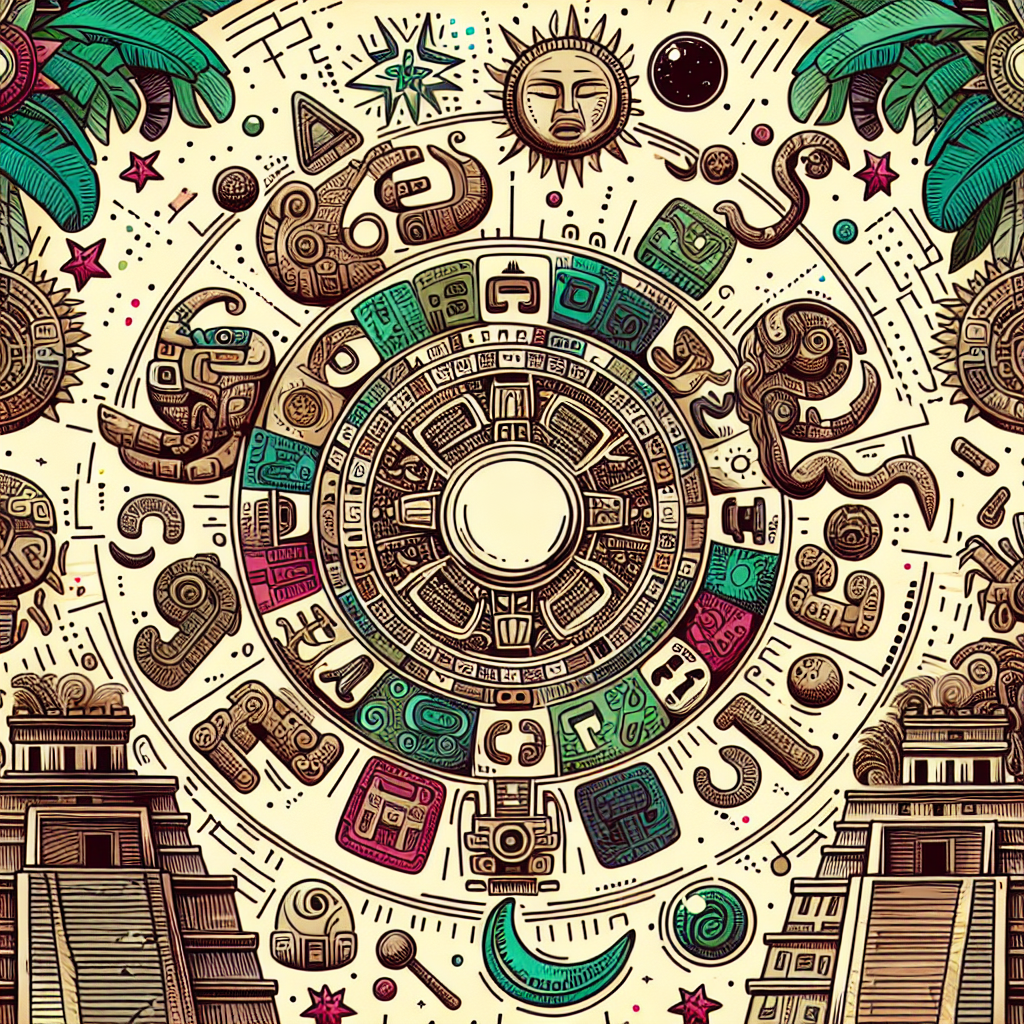So you’re ready to embark on a fascinating journey into the enigmatic world of Mexico’s Maya calendar and astrology. Get ready to unlock the secrets of this ancient civilization as we delve into the intricate workings of their calendar system and the profound role it played in their daily lives. Brace yourself for a captivating exploration that will transport you back in time to a world filled with celestial wonders and mystical interpretations. Join us as we unravel the mysteries that lie within the fascinating realm of Mexico’s Maya calendar and astrology.
The History and Origins of the Maya Calendar
The Maya civilization, which thrived in Mesoamerica from around 2000 BC to 1500 AD, left behind a rich cultural legacy. One of the most remarkable aspects of their civilization was their comprehensive understanding and utilization of time. Time held great importance in Maya culture, shaping their daily lives, religious practices, and even their political decisions.
The Ancient Maya Civilization
The ancient Maya civilization stretched across what is now modern-day Mexico, Guatemala, Belize, Honduras, and El Salvador. This complex society developed a sophisticated system of agriculture, built impressive cities with monumental architecture, and made significant advancements in mathematics, astronomy, and writing.
The Importance of Time in Maya Culture
To the Maya people, time was not simply a linear progression, but a cyclical concept that involved various cycles, each with its own significance and purpose. Understanding time was crucial for the Maya civilization as it guided their agricultural practices, determined their religious ceremonies and rituals, and influenced their everyday lives.

The Development of the Maya Calendar
The Maya calendar system was a marvel of precision and complexity. It consisted of different calendars that interacted with one another to form a comprehensive understanding of time. The three main calendars were the Long Count, the Tzolk’in, and the Haab’.
The Basics of the Maya Calendar
The Long Count
The Long Count calendar was used for recording longer periods of time, such as historical events or cosmic cycles. It was based on a cycle of 5,125 years and was divided into various units, including baktuns, katuns, tuns, uinals, and kins.
The Tzolk’in Calendar
The Tzolk’in calendar was a sacred 260-day calendar that played a central role in Maya religious and divinatory practices. It consisted of 13 numbered days combined with 20 day names. The combination of these two cycles created a unique 260-day period.
The Haab’ Calendar
The Haab’ calendar, also known as the Vague Year, followed a 365-day cycle based on the solar year. It consisted of 18 months, each with 20 days, and an additional five unlucky days known as Wayeb’. The Haab’ calendar ensured harmony with the agricultural seasons and guided the Maya in their farming activities.
Interpreting the Maya Calendar
The Role of Astrology
Astrology played a significant role in Maya culture and was closely intertwined with their calendar system. The Maya believed that celestial bodies influenced human affairs and used astrology to interpret and understand these influences. They observed the movements of the sun, moon, stars, and planets to determine favorable times for various activities, such as planting crops, going to war, or conducting religious ceremonies.
Divination and Prophecy
Divination and prophecy were essential practices in Maya society. The Maya sought guidance from the gods through various divination techniques, such as interpreting patterns in the natural world, using sacred objects, or consulting shamans or priests. They believed that these practices allowed them to receive messages from the spirit realm and gain insights into future events.
The Influence of Gods and Deities
The Maya associated specific deities with different aspects of the calendar and astrology. These gods played a crucial role in determining the fate and destiny of individuals and the community as a whole. For example, the Sun God, Kinich Ahau, represented masculine energy, vitality, and leadership, while the Moon Goddess, Ixchel, represented feminine energy, fertility, and childbirth. Understanding the influence of these divine beings was fundamental to comprehending Maya astrology.

The Mysteries of the Long Count Calendar
The 2012 Phenomenon
The Maya Long Count calendar gained significant attention in modern times due to the 2012 phenomenon. Many believed that the Long Count calendar predicted an apocalyptic event on December 21, 2012. However, scholars and Maya experts debunked this doomsday myth, emphasizing that the Maya never prophesied the end of the world, but rather the end of one cycle and the beginning of another.
The Baktun Cycle
Within the Long Count calendar, the Baktun cycle is particularly significant. A Baktun consists of 144,000 days and represents a major milestone in the calendar’s progression. The completion of a Baktun marked a time of reflection, celebration, and the potential for societal and spiritual transformation.
Debunking the Doomsday Myth
While the 2012 phenomenon sparked fears of an impending cataclysm, it is important to understand that the Maya themselves did not believe that this date signified the end of the world. Instead, it represented a significant transition point in their cyclical understanding of time. The Maya calendar continues to function beyond 2012, and its wisdom and relevance endure.
The Tzolk’in Calendar: The Sacred Round
26-Day Tzolk’in Cycle
The Tzolk’in calendar consisted of a 260-day cycle known as the Sacred Round. This cycle was formed by combining 13 numbered days with 20 day signs. Each combination of a number and a day sign represented a unique energy or essence.
Kin and Day Signs
The Tzolk’in calendar’s 20 day signs held profound meaning for the Maya. Each sign represented a particular energy, personality traits, and the potential challenges and opportunities that an individual may encounter on a specific day. The Maya believed that understanding these signs allowed individuals to align themselves with the natural flow of the universe.
Understanding Personal Energies
By identifying their birth date in the Tzolk’in calendar, individuals could determine their personal energy or nawal. This energy influenced their character, strengths, weaknesses, and their purpose or destiny in life. Understanding one’s personal energy in the Tzolk’in calendar was a vital component of Maya astrology and self-discovery.
The Haab’ Calendar: The Vague Year
The 365-Day Haab’ Cycle
The Haab’ calendar, consisting of 365 days, aligned with the solar year. It ensured that the Maya maintained harmony with the changing seasons and agricultural practices. By following the Haab’, the Maya could determine the best times for planting, harvesting, and other farming activities.
The 19-Months of the Haab’
The Haab’ calendar divided the year into 19 months, each with 20 days. While these months did not perfectly align with the lunar or solar cycles, they provided a practical framework for organizing time and tracking seasonal changes. Each month had its own unique name and significance.
Harmonizing with the Seasons
The Haab’ calendar system allowed the Maya to harmonize their daily lives and rituals with the rhythms of nature. Understanding the changing seasons, the movement of celestial bodies, and the interplay between the Haab’ and other calendar systems enabled the Maya to make informed decisions regarding agriculture, religious ceremonies, and communal activities.
The Role of Astrology in Maya Culture
The Sacredness of Astronomy
To the ancient Maya, astronomy was not merely a scientific pursuit but a sacred practice deeply connected to their spiritual beliefs. They observed the motions of celestial bodies and developed a complex understanding of the cosmos. Astronomy provided a means for the Maya to communicate with the gods, navigate their physical and spiritual realms, and comprehend the cyclical nature of time.
The Zodiacal Signs in Maya Astrology
In Maya astrology, the zodiacal signs played a significant role in determining an individual’s personality traits, strengths, weaknesses, and compatibility with others. The Maya associated specific animals with each zodiacal sign, such as the crocodile, jaguar, or eagle, and believed that these animals conveyed specific energies and characteristics.
Astrological Predictions and Readings
Maya astrology offered predictions and insights into future events based on the alignment of celestial bodies and the interpretation of various calendars. Maya astrologers, known as daykeepers, utilized their knowledge of the different calendar systems, the zodiacal signs, and celestial observations to provide guidance and advice to individuals and the community as a whole.
Ancient Divination and Prophecy
Consulting the Gods
The Maya sought answers to their life’s questions and concerns through various divination techniques. They believed that the gods communicated with them through signs, symbols, and oracles. Divination practices included observing natural phenomena, casting sacred objects like beans or shells, or interpreting dreams and visions. These practices allowed the Maya to seek guidance from the divine realm and gain insights into future outcomes.
The Role of Priests and Shamans
Priests and shamans held significant authority in Maya society, serving as intermediaries between the human world and the spiritual realm. These religious figures conducted divination rituals, interpreted signs, and offered spiritual guidance. They played an essential role in providing prophetic insights, performing ceremonies and rituals, and healing physical and spiritual ailments.
Fortune-telling Techniques
Ancient Maya fortune-telling involved a variety of techniques, such as palm reading, scrying, or interpreting the patterns and movements of sacred animals, such as birds or snakes. These practices aimed to unravel the mysteries of the future, guide decision-making, and provide individuals with a deeper understanding of their destiny and life’s purpose.
Deities and Their Influence on Maya Astrology
The Sun God: Kinich Ahau
Kinich Ahau, the Sun God, played a central role in Maya astrology. The Maya associated him with leadership, vitality, masculinity, and the life force. His presence in Maya astrology represented the importance of masculine energy and the powerful influence of the sun on the physical and spiritual realms.
The Moon Goddess: Ixchel
Ixchel, the Moon Goddess, embodied feminine energy, fertility, childbirth, and the cycles of creation. She played a vital role in Maya astrology, symbolizing transformation, intuition, emotions, and the nurturing aspect of existence. The Maya revered Ixchel as the patroness of healers and midwives.
The Venus God: Kukulkan
Kukulkan, the Venus God, represented the planet Venus, commonly known as the morning star. Maya astrology associated him with creativity, knowledge, balance, and the pursuit of spiritual enlightenment. Kukulkan reflected the Maya’s deep understanding of the celestial bodies’ influence on human affairs and spiritual growth.
Unraveling the Secrets of the Maya Calendar
New Discoveries and Research
Ongoing research and archaeological discoveries continue to shed light on the depth and complexity of the Maya calendar system. Scholars and experts strive to decipher ancient texts, decode glyphs, and uncover the hidden meanings within the Maya’s rich cultural artifacts. These discoveries contribute to a deeper understanding of Maya timekeeping and its relevance to our modern world.
Decoding Ancient Maya Texts
The decoding of ancient Maya texts and inscriptions has been instrumental in unraveling the secrets of their calendar system and astrology. Epigraphers and linguists painstakingly analyze glyphs, hieroglyphics, and codices to reconstruct lost knowledge and decipher the meaning behind the Maya’s intricate calendar calculations and astrological observations.
Reconstructing Lost Knowledge
While the ancient Maya civilization disappeared centuries ago, efforts are being made to revive their calendar and astrology traditions. Contemporary Maya communities, as well as scholars, seek to preserve and revive this ancient wisdom, ensuring that future generations can continue to benefit from the profound knowledge encapsulated within the Maya calendar system.
In conclusion, the Maya calendar system is a testament to the ingenuity, complexity, and spiritual depth of the ancient Maya civilization. It served as a guide for their daily lives, religious practices, and agricultural activities. The Maya’s understanding of time, their reverence for celestial bodies, and their belief in the influence of gods and deities permeated every aspect of their culture. Today, we can still explore the mysteries of the Maya calendar and astrology, gaining insights into this remarkable ancient civilization and finding inspiration in their cyclical view of time.
